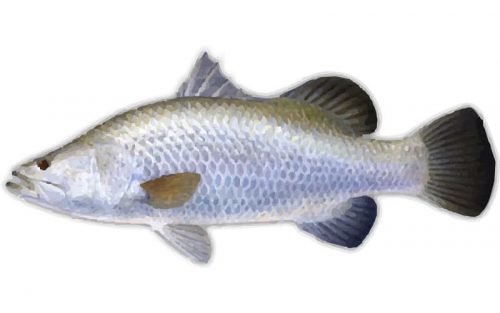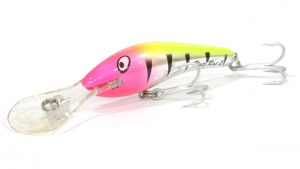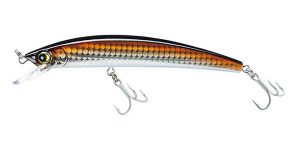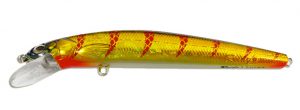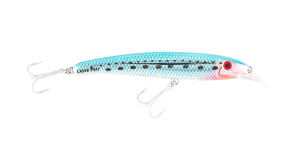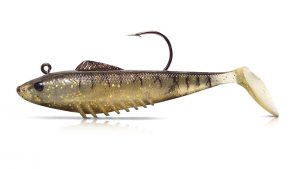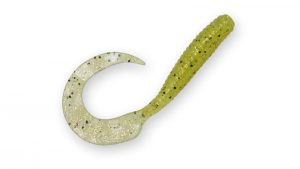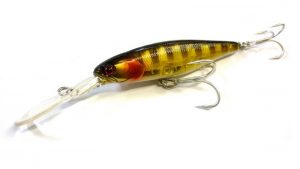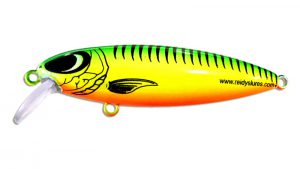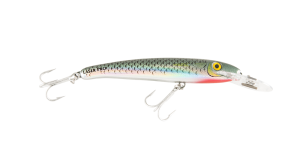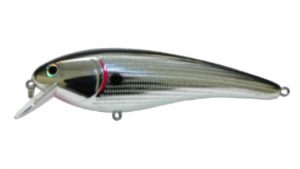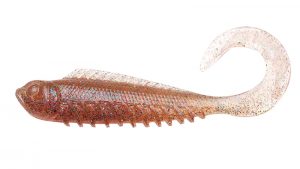Barramundi Lates calcarifer
Australia’s most sort after estuary fish.
The Barramundi would have to be one of this country's most iconic sports fish and can be caught in both fresh and salt water.
The freshwater fish are generally a lot bigger in girth than the salties as they don’t have to fight current or tide. But both can be caught using the same methods.
Habitat
Inhabits a wide variety of habitats in rivers creeks and mangrove estuaries in clear to turbid water. Most common in rivers and creeks with large catchments with a slow continuous flow and water temperatures above 20°C. Shows a distinct preference for submerged logs, rock ledges and other structure in the water.
Barramundi are a catadromous species, that is it grows to maturity in the upper reaches of freshwater rivers and streams and adults move downstream, especially during flooding, to estuaries and coastal waters for spawning.
Distribution
L.calcarifer has a very extensive range in tropical and semi-tropical areas of the Indo-Pacific. Its distribution extends from the Persian Gulf to southern China and southwards to the northern Australia. Within Australia its range extends from the Mary and Maroochy River systems in south-east Queensland northwards around the entire northern coast to Shark Bay in Western Australia.
Reproduction
Barramundi are protoandrous hermaphrodites: they start life as males, reaching maturity at around 3 to 4 years of age and later change gender and become females, usually at around age 5. Small fish are almost exclusively male with the percentage of females increasing with overall length.
The female produce large numbers of small, non-adhesive, pelagic eggs between 0.6 mm and 0.9 mm in diameter (one 22 Kg female was recorded as having 17 million eggs). The eggs appear pinkish when water hardened. The eggs hatch within 15-20 hours at which time the larvae are around 1.5 mm in length and the mouth and eyes are well developed, although the yolk sac is large. At 2.5 mm the mouth is large and open, the yolk sac is greatly reduced and the pectoral fins are beginning to develop. Above this size the larvae begin to exhibit the characteristic colouration of juveniles of this species – overall brown mottled markings with a white stripes running lengthwise along the head. At 3.5 mm the yolk sac is all but gone, fin rays are beginning to appear and the teeth are well developed. By the fifth day the yolk sac has been completely absorbed and by 8.5 mm the fins are fully developed.
Growth rate is variable, but generally rapid. Typical overall lengths at the end of each year are as follows:
Diet
A carnivore, feeding mainly on smaller fish as well as crustaceans. Juveniles take smaller fish fry, smaller crustaceans and aquatic insects.
Angling
An exciting and popular target for anglers in northern Australia, Barramundi responds well to lures either cast or trolled. Large minnow pattern lures are popular and productive when fished around snags, mangrove roots rocky outcrops, submerged timber and other heavy cover. Bright metallic gold or bronze a particularly popular lure colours for these feisty fellows. Often known for its spectacular leaps from the water during the fight, the Barramundi justifiably commands respect from those who seek it out.
Barramundi are also popular on heavier weight fly gear, and they will take live bait, especially mullet, prawns and macrobrachium (a giant freshwater shrimp). Whilst some excellent specimens have been taken on dead baits, it is not generally a recommended option.
These days many Barramundi sports fishermen practice catch and release. This practice is encouraged by NFA, although there is no reason not to take the occasional fish for the table.
